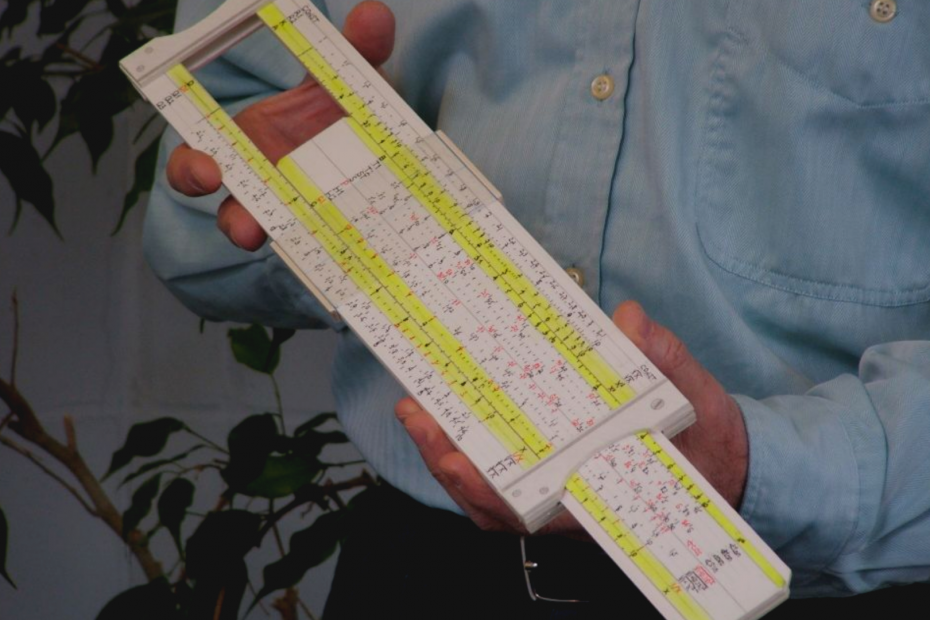Ask the older engineers, aged 40 and up, about what they used as a calculating device while they were studying engineering. They will answer unanimously the ancestor of the modern electronic calculator, the slide rule.
The slide rule was first used in late 17th century, considerably the first efficient computational tool for engineers. Credited to William Oughtred as the originator, the slide rule made it easier to utilize the log relations by John Napier, from the number line on which the displacement of the numbers was proportional to their logs.
Other than logarithms, multiplication and division in calculations were more convenient using the two log displacements of the numbers in the slide rule. Later, the slide rule was developed to perform exponential and trigonometric functions. Ultimately, this tool sent the man to the moon.

The slide rule is made of three bars, with a sliding center bar sandwiched by two outer bars fixed with respect to each other. There is a metal “window” that is inserted over the slide rule to act as a place holder, with a cursor fixed in the center of that window to make readings accurately.
Every slide rule has scales A-D which are labelled on the left-hand side. There can be more scales on a slide rule depending on the number of mathematical functions it can perform. But for the A-D scales, C and D are used for multiplication and division, while A and B scales are for square and square roots.
Numbers on the slide rule are marked according to a logarithmic scale, which is why the first number on the slide rule scale (also called the index) is 1 because the log of zero is one.

Accuracy is what sets electronic calculators apart from slide rules. Readings on a slide rule are dependent on the ability of the user to read numbers off the scale, making it important for engineers in the past to have a “feel” for numbers. This is no longer needed for engineers in this generation who just read values off of the digital screen.
To young engineers who want to check what it’s like to use a slide rule, and to those elderly engineers who want to be reminded of their past slide rule experiences, one can check a virtual slide rule by Anti Quark in their website here.
Source: MIT
Disclaimer: This is rehashed from an article I wrote in June 2017 for GineersNow. Some parts are added or edited for clarity.
